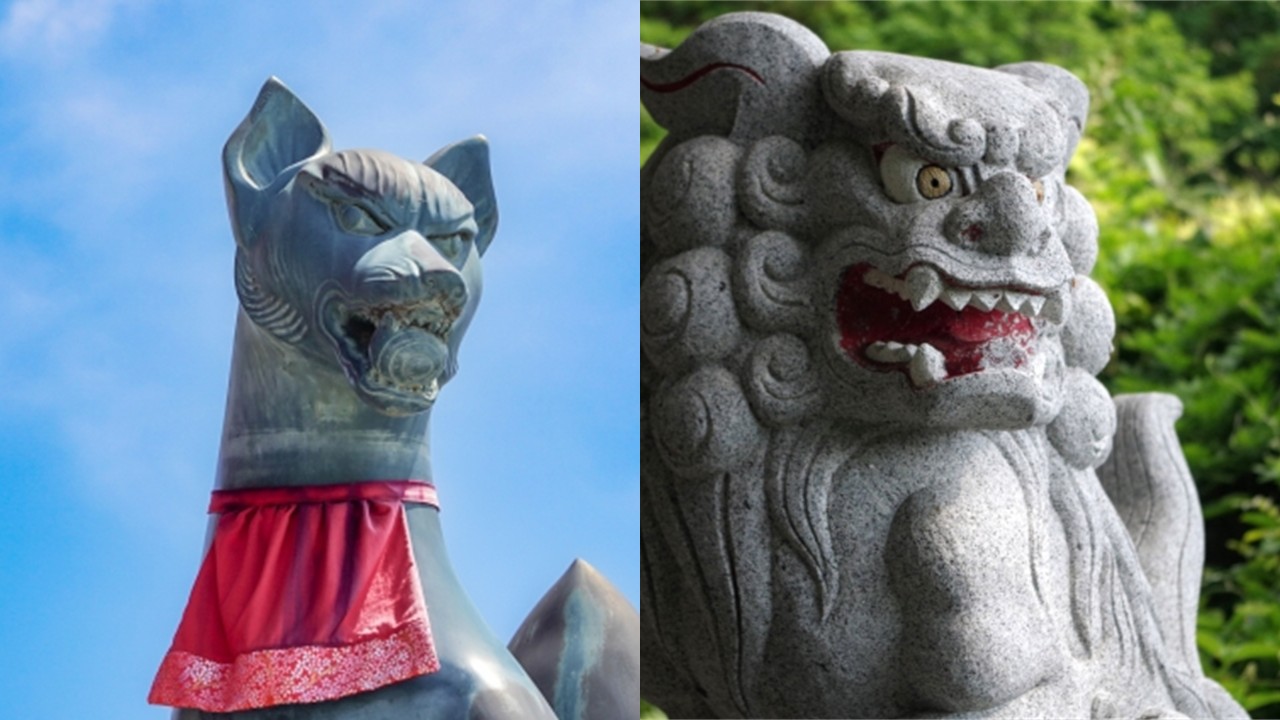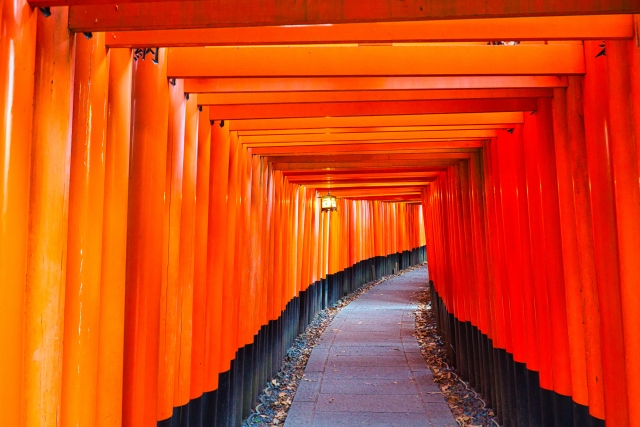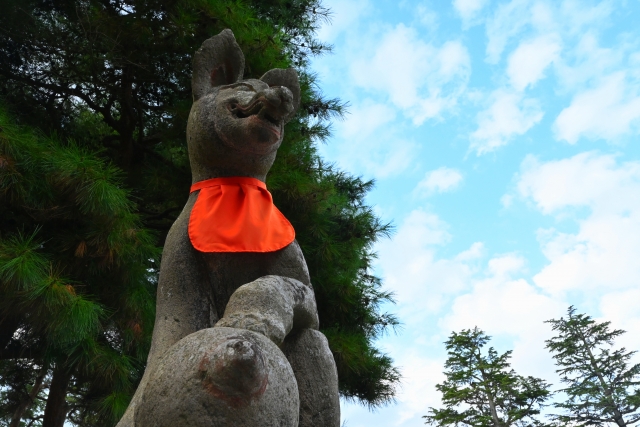To the Japanese, the fox is more than just an animal—it holds a special, almost sacred place in the cultural imagination.
A sudden presence felt on a quiet night road.
An unseen gaze sensed deep in the mountains.
Even when no form can be seen, there’s a sense that something is there.
In moments like these, the Japanese have long imagined the fox as the one behind such mysteries.
A white fox standing quietly beyond the red torii gates.
A shapeshifter in old folktales, often deceiving or confusing humans.
At once sacred and mysterious, familiar yet a little frightening—the fox embodies duality itself.
Why have the Japanese held such deep, unique feelings toward foxes?
And why do they still regard them as sacred today?
By exploring the role of the fox, we gain insight into the spiritual heart of Japan.
The Origins of the Fox and Inari Faith
Any discussion of the fox in Japan must begin with Inari worship.
This belief system traces back to the Nara period (8th century), with Fushimi Inari Taisha in Kyoto as its spiritual birthplace.
Originally, this shrine was dedicated to the mountain deity Inari, known formally as Ukanomitama-no-Kami—a guardian of agriculture and especially rice cultivation.
At the time, Japan was an agrarian society.
Rice was not just food—it was life itself. People prayed to the gods of mountains and fields for a bountiful harvest, offering rituals in return.
Over time, Inari worship spread beyond farmers, reaching merchants, artisans, warriors, and townspeople alike.
Inari came to be revered as a deity of prosperity and daily life—protector of food, clothing, and shelter.
In this way, Inari faith became deeply woven into Japanese society.
But why do these shrines have fox statues instead of the more common guardian lion-dogs (komainu)?
It’s because the fox is considered a messenger of Inari—the shinshi, or divine envoy.
Foxes often appeared in rice fields and vanished just as quickly.
This elusive presence struck early people as otherworldly—something sacred.
And so fox statues began to appear at Inari shrines, often depicted with rice stalks, keys, or scrolls in their mouths—symbols of abundance, wisdom, and mystery.
While lion-dogs guard against threats from outside, foxes serve a different role: they carry the words of the gods to humans.
They are mediators between the human world and the invisible one—a role unique in Shinto belief.

While komainu (guardian lion-dogs) are protectors that ward off evil spirits, foxes are seen as messengers that convey the words of the gods to humans.
This tradition has spread nationwide. Today, over 30,000 Inari shrines exist across Japan—each one watched over by silent, ever-present foxes.
Living on the Threshold
The fox has long stood at the border between the real and the unreal.
For instance, in Japan, when rain falls from a clear sky, the weather is poetically called “a fox’s wedding.”
People once imagined foxes holding secret ceremonies in distant forests, hidden from human sight.
Or consider the kitsunebi—ghostly, bluish flames seen floating in the mountains at night.
These were thought to be fox spirits lighting their way.
Such mysterious natural events have often been explained as “the work of foxes.”
Rather than dismissing the unexplainable, the Japanese have historically chosen to quietly accept and even embrace these mysteries.
The fox stands at the boundary between our world and the otherworldly.
It is precisely this ambiguity that gives it sacred meaning in Japanese culture.

In Japan, the mysterious weather phenomenon of rain falling while the sun is shining is called ‘a fox’s wedding.
The Torii as a Symbol of Hope and Gratitude
Even today, Inari shrines remain deeply rooted in the hearts of many.
Countless red torii gates line the paths to these shrines.
Walking through them feels like entering another realm altogether.
Each gate is a token of thanks, donated by someone whose prayer was answered.
In this way, Inari worship is not just about asking for blessings. It’s a culture of giving thanks—a spirituality expressed in visible form.
Inari is known as a “kami of practical blessings”—for good harvests, successful business, and everyday well-being.
People express their prayers and gratitude not just in words, but in lasting, tangible forms—like torii gates.
The torii is more than a symbolic entryway.
It is a path built on layers of hope and appreciation, connecting the ordinary with the extraordinary.
And just beyond these gates, near the quiet shrine, a white fox still stands watch, guarding the invisible threads that tie our world to the one beyond.

The Senbon Torii (Thousands of Torii Gates) at Fushimi Inari Taisha in Kyoto, the head shrine of all Inari shrines in Japan.
Why Is the Fox So Special to the Japanese?
It’s because the fox is neither just an animal, nor merely a deity.
It is a rare and unique figure—standing between the seen and unseen, between nature and spirit.
In Japan’s spiritual tradition, nature has always been a force beyond human control—sometimes awe-inspiring, even frightening.
Yet instead of rejecting what they could not understand, the Japanese have chosen to live alongside it, to coexist with mystery.
The fox embodies that very idea.
It represents ambiguity, fluidity, the acceptance of what cannot be explained.
And in doing so, it reflects a deeper truth about the Japanese way of being:
A quiet respect for uncertainty, and a willingness to live within its grace.




コメント